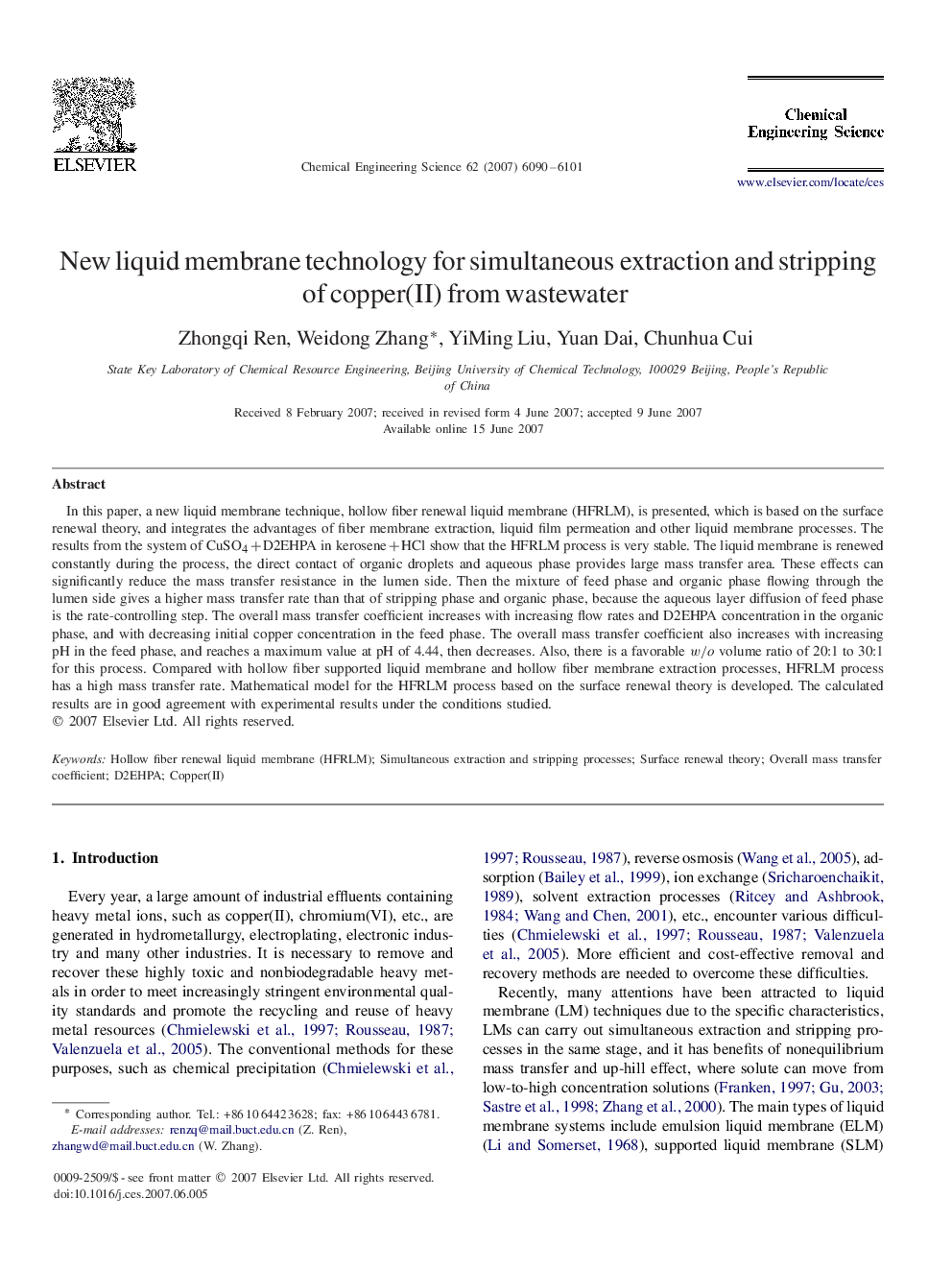| Article ID | Journal | Published Year | Pages | File Type |
|---|---|---|---|---|
| 158572 | Chemical Engineering Science | 2007 | 12 Pages |
In this paper, a new liquid membrane technique, hollow fiber renewal liquid membrane (HFRLM), is presented, which is based on the surface renewal theory, and integrates the advantages of fiber membrane extraction, liquid film permeation and other liquid membrane processes. The results from the system of CuSO4+D2EHPACuSO4+D2EHPA in kerosene+HClkerosene+HCl show that the HFRLM process is very stable. The liquid membrane is renewed constantly during the process, the direct contact of organic droplets and aqueous phase provides large mass transfer area. These effects can significantly reduce the mass transfer resistance in the lumen side. Then the mixture of feed phase and organic phase flowing through the lumen side gives a higher mass transfer rate than that of stripping phase and organic phase, because the aqueous layer diffusion of feed phase is the rate-controlling step. The overall mass transfer coefficient increases with increasing flow rates and D2EHPA concentration in the organic phase, and with decreasing initial copper concentration in the feed phase. The overall mass transfer coefficient also increases with increasing pH in the feed phase, and reaches a maximum value at pH of 4.44, then decreases. Also, there is a favorable w/ow/o volume ratio of 20:1 to 30:1 for this process. Compared with hollow fiber supported liquid membrane and hollow fiber membrane extraction processes, HFRLM process has a high mass transfer rate. Mathematical model for the HFRLM process based on the surface renewal theory is developed. The calculated results are in good agreement with experimental results under the conditions studied.
